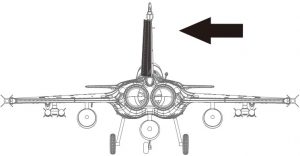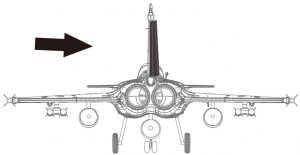FMS Dassult Rafale Instruction Manual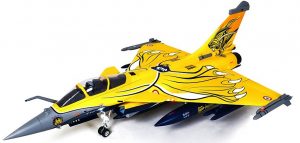
WARNING
WARNING: Read the ENTIRE instruction manual to become familiar with the features of the product before operating. Failure to operate the product correctly can result in damage to the product,personal property and cause serious injury. This is a sophisticated hobby product and NOT a toy. It must be operated with caution and common sense and failure to do so could result in injury or damage to the product or other property. This product is not intended for use by children without direct adult supervision. This manual contains instructions for safety operation and maintenance. It is essential to read and follow all the instructions and warnings in the manual prior to assembly, setup or use, in order to operate and avoid damage or serious injury.
Safety precaution and warnings
As the user of this product, you are solely responsible for operating in a manner that does not endanger yourself and others or result in damage to the product or the property of others. This model is controlled by a radio signal subject to interference from many sources outside your control. This interference can cause momentary loss of control so it is advisable to always keep a safe distance in all directions around your model, as this margin will help avoid collisions or injury. Age Recommendation: Not for children under 14 years. This is not a toy.
- Never operate your model with low transmitter batteries.
- Always operate your model in an open area away from cars, traffic or people.
- Avoid operating your model in the street where injury or damage can occur.
- Never operate the model in populated areas for any reason.
- Carefully follow the directions and warnings for this and any optional support equipment you use (chargers,rechargeable battery packs, etc.)
- Keep all chemicals, small parts and anything electrical out of the reach of children
- Moisture causes damage to electronics. Avoid water exposure to all equipment not specifically designed and protected for this purpose.
- Never lick or any place of any your model in your mouth as it could cause serious injury or even death.
Safety
Lithium Polymer (Li-Po) Battery WarningCAUTION: Always follow the manufacturer’s instructions for safe use and disposal of batteries. Fire, property damage, or serious injury can result from the mishandling of Li-Po batteries.
- By handling, charging or using a Li-Po Battery you assume all risks associated with lithium batteries. If at any time the batteries begin to swell or balloon, discontinue use immediately!
- Always store the batteries at room temperature in a dry area to extend the life of the battery. Always transportor temporarily store the battery in a temperature range of 40-120F. Do not store the battery or model in a car or in direct sunlight. If stored in a hot car, the battery can be damaged or even catch fire
- Never use a Ni-Mh Charger to charge Li-Po Batteries. Failure to charge the battery with a Li-Po compatible charger may cause fire resulting in personal injury and property damage.
- Never discharge Li-Po Cells below 3V.
- Never leave charging batteries unattended.
- Never charge damaged batteries. Charging the Flight Battery Warning
- Use a battery charger that is designed to safely charge the Li-Po Battery. Read the charger instructions care fully before use. When charging the battery, make certain the battery is on a heat resistant surface. It is also highly recommended readily available at hobby shops or online.
Introduction
2 years in the making, introducing the FMS 80mm Rafale.
Designed by the French Dassault company, the Rafale is a highly maneuverable delta-winged fighter with a full-flying canard. The excellent dog fighting, carrier operations and air to surface attack performance of the Rafale has allowed it to gain worldwide success.
Like its full-scale counterpart, the FMS 80mm Rafale features an attractive trim scheme, excellent scale details and fully functional canards- allowing the aircraft to be truly unique when compared to other 80mm EDF aircraft on the market today.Developed to replicate both the looks and performance of the real aircraft, FMS has dedicated it’s decades long experience into designing the 80mm Rafale. Details such as the pilot, cockpit interior, panels, removable armaments, auxiliary fuel tanks, refueling probe, targeting sensor etc; dynamic features such as functional LED navigation and landing lights, CNC shock-absorbing electric retracts, functional canards and flaps etc.
Like all other FMS aircraft, the 80mm Rafale was designed to reduce build time to a minimum. Utilising screws, latches and quick connectors, experienced builders can complete the build process in as little as 5 minutes.
Functions such as delta-mixing, sequential landing gear bay doors, alternating flash navigation lights, nose gear landing lights, slowed flaps etc are all controlled by a central control board. An 80mm 12 bladed EDF with a platinum edition 328 inrunner motor and 100A high performance ESC easily accomplishes fighter jets maneuvers with realistic sound and speed.
Don’t miss out on your chance to own one of the best looking modern fighters- the FMS 80mm Rafale!
Features:
- 3280-2100KV platinum edition in runner motor with a high-performance 100A ESC
- Delta wing design with full flying canards and functional flaps
- CNC metal shock-absorbing landing gear
- Functional navigation and landing lights
- Central function controller
- Functional and static details lovingly replicated
- Water based vibrant trim scheme.
Kit contents
Before assembly, please inspect the contents of the kit. The photo below details the contents of the kit with labels. If any parts are missing or defective, please identify the name or part number (refer to the spare parts list near the end of themanual) then contact your local shop or email us: support @fmsmodel.com.
Specifications
| Wingspan | 974mm /38.3 in |
| Overall Length | 1409mm /55.5 in |
| Flying Weight | Around 3280g |
| Motor Size | 3280 KV2100 |
| Wing Load | 85.2g/dm² (0.17oz/in²) |
| Wing Area | 38.5dm² (596.6 sq.in) |
| ESC | 100A |
| Servo | 13g X 7pcs,9g X 2pcs |
| Recommended Battery | 22.2V4000mAh-5000mAh 45c |
- A: Fuselage

- B : Nose cone

- C : Main wing

- D : Weapons package

- E :Auxiliary fuel tanks

- F :Vertical stabilizer

- G :Wing spar

- H :Fuel probe

- I :Canard

- J : Screw set (HKM3.0x16*4 HKM3.0x20*2 4x3mm set screw*2)

Model assembly
Main wing installation
- Connect the wing halves onto the wing spar.
- Fit the wing halves into the fuselage cutouts.

- Secure the wing halves onto the fuselage with the included screws.

- Adjust the elevon surfaces to align with the fuselage.

Vertical stabilizer installation
- Connect the rudder servo to the preinstalled servo lead within the fuselage.
- Install the vertical stabilizer into the fuselage pocket.

- Attach the vertical stabilizer to the fuselage using the included screws

Canard installation
- Install the canard halves into the fuselage as shown.

- Secure the canards using the included screws.

- Align the canards to the fuselage using a hex drive, as shown.

Weapons installation
- Slide the missiles aft onto the missile rack.

- Attach the missiles onto the wings by sliding them aft

Auxiliary fuel tank installation
- Install the auxiliary fuel tanks onto the wings by sliding them aft.
 Note: the sticker side faces outboard.
Note: the sticker side faces outboard. - Install the center auxiliary fuel tank onto the bottom fuselage by sliding it aft.

- Finished installation diagram.

Installation of the fuel probe
- Slide the fuel probe aft onto the fuselage until secure.

Nose cone installation
- Attach the nose cone onto the fuselage, ensuring correct orientation.

Wiring diagram

Battery installation
- Pull back on the latch and remove the battery hatch.
- Apply the hook tape to the cable end of the battery.
- Slide the full charged battery into the battery compartment with the power supply cable toward the rear end of the plane.

Note: The center of gravity can be adjusted by moving the battery forward or aft.Having the correct center of gravity is critical to achieving proper flight characteristics.
Receiver diagram
The cables from the servo connector board should be connected to your receiver in the order shown. Note that th LEDs can be powered by any spare channel on the receiver. Tuck the wire leads into the recessed cavity towards the rear of the battery hatch.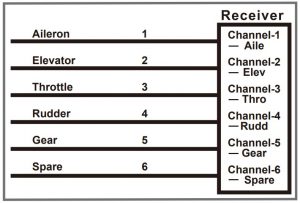
Get your model ready to fly
Important ESC and model information
- The ESC included with the model has a safe start. If the motor battery is connected to the ESC and the throttle stick is not in the low throttle or off position, the motor will not start until the throttle stick is moved to the low throttle or off position. Once the throttle stick is moved to the low throttle or off position, the motor will emit a series of beeps. Several beeps with the same means the ESC has detected the cells of the battery. The count of the beeps equals the cells of the battery. The motor is now armed and will start when the throttle is moved.
- The motor and ESC come pre-connected and the motor rotation should be correct. If for any reason the motor is rotating in the wrong direction, simply reverse two of the three motor wires to change the direction of rotation.
- The motor has an optional brake setting. The ESC comes with brake switched off and we recommend that the model be flown with the brake off. However, the brake could be accidentally switched on if the motor battery is connected the ESC while the throttle stick is set at full throttle. To switch the brake off,move the throttle stick to full throttle and plug in the motor battery. The motor will beep one time. Move the throttle stick to low throttle or the off position. The motor is ready to run and the brake will be switched off.
- Battery Selection and Installation. We recommend the 22.2V4000mAh 5000mAh 45c Li-Po battery. If using another battery, the battery must be at least a 22.2V4000mAh-5000mAh 45c battery. Your battery should be approximately the same capacity, dimension and weight as the 22.2V4000mAh 5000mAh 45c Li-Po battery to fit the fuselage without changing the center of gravity significantly.
Transmitter and model setup
Before getting started, bind your receiver with your transmitter. Please refer to your transmitter manual for proper operation.
CAUTION:
- To prevent personal injury,
- DO NOT install the propeller assembly onto the motor shaft while testing the control surfaces.
- DO NOT arm the ESC and do not turn on the transmitter until the Transmitter Manual instructs you to do so.
Tips: Make sure all control sticks on your radio are in the neutral position (rudder, elevator, ailerons) and the throttle is in the OFF position. Make sure both ailerons move up and down (travel) the same amount. This model tracks well when the left and right ailerons travel the same amount in response to the control stick. Move the controls on the transmitter to make sure the aircraft control surface moves correctly. See diagrams right.
- Bank left
 Aileron :
Aileron :

- Bank right

- Climb

- Descend

- Steer left
 Elevator :
Elevator :

- Steer right
 Steering Rudder :
Steering Rudder :

Control throws
The suggested control throw setting for the 80mm Dassault Rafale are as follows (dual rate setting):
Tips: On the first flight, fly the model in low rate. The first time you use high rates,be sure to fly at low to medium speeds. High rate, as listed, is only for EXTREME maneuvering.
Clevis installation
- Pull the tube from the clevis to the linkage.
- Carefully spread the clevis, then insert the clevis pin into the desired hole in the control horn.
- Move the tube to hold the clevis on the control horn.






Control horn and servo arm settings
The table shows the factory settings for the control horns and servo arms. Fly the aircraft at the factory settings before making changes. After flying,you may choose to adjust the linkage positions for the desired control response.
|
– |
Horns | Arms |
| Elevator | 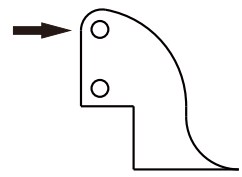 |
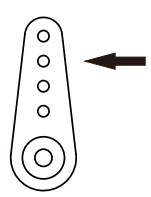     |
| Rudder |      |
     |
| Ailerons |      |
     |
| Canard |      |
     |
Check the C.G. (Center of gravity)
When balancing your model, adjust the battery as necessary so the model is level or slightly nose down. This is the correct balance point for your model. After the first flight, the CG position can be adjusted for your personal preference.
- The recommended Center of Gravity (CG) location for your model is(110-130mm) from the leading edge of the main wing (as shown) with the battery pack installed. Mark the location of the CG on top of the wing.
- When balancing your model, support the plane at the marks made on the bottom of the main wing with your fingers or a commercially available balancing stand. This is the correct balance point for your model. Make sure the model is assembled and ready for flight before balancing.

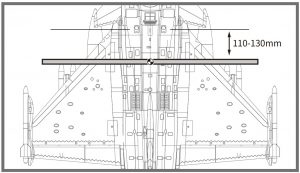
Before flying the model
Find a suitable flying site
Find a flying site clear of buildings, trees, power lines and other obstructions. Until you know how much area will be required and have mastered flying your plane in confined spaces, choose a site which is at least the size of two to three football fields – a flying field specifically for R/C planes is best. Never fly near people – especially children, who can wander unpredictably.
Perform the range check for your plane
As a precaution, an operational ground range test should be performed before the first flight each time you go out. Performing a range test is a good way to detect problems that could cause loss of control such as low batteries, defective or damaged radio components, or radio interference. This usually requires an assistant and should be done at the actual flying site you will be using.
First turn on the transmitter, then install a fully-charged batter into the fuselage. Connect the battery and install the hatch.
Remember, use care not to bump the throttle stick. Otherwise, the propeller/fan will turn and possibly cause damage or injury.
Note: Please refer to your Transmitter Manual that came with your radio control system to perform a ground range check. If the controls are not working correctly or if anything seems wrong, do not fly the model until you correct the problem. Make certain all the servo wires are securely connected to the receiver and the transmitter batteries have a good connection.
Monitor your flight time
Monitor and limit your flight time using a timer (such as on a wristwatch or in your transmitter if available). When the batteries are getting low you will usually notice a performance drop before the ESC cuts off motor power, so when the plane starts flying slower you should land. Often (but not always) power can be briefly restored after the motor cuts off by holding the throttle stick all the way down for a few seconds. To avoid an unexpected dead-stick landing on your first flight, set your timer to a conservative 4 minutes. When your alarm sounds you should land right away.
Flying course
Take off
While applying power, slowly steer to keep the model straight. The model should accelerate quickly. As the model gains flight speed you will want to climb at a steady and even rate. It will climb out at a nice angle of attack (AOA).
Flying
Always choose a wide-open space for flying your plane. It is ideal for you to fly at a sanctioned flying field. If you are not flying at an approved site always avoid flying near houses, trees, wires and buildings. You should also be careful to avoid flying in areas where there are many people, such as busy parks, schoolyards, or soccer fields. Consult laws and ordinances before choosing a location to fly your aircraft. After takeoff, gain some altitude. Climb to a safe height before trying technical man oeuvres, including high speed passes, inverted flight, loops, and point rolls.
Landing
Land the model when you hear the motor pulsing (LVC) or if you notice a reduction in power. If using a transmitter with a timer, set the timer so you have enough flight time to make several landing approaches. The model’s three point landing gear allows the model to land on hard surfaces. Align model directly into the wind and fly down to the ground. Fly the airplane down to the ground using 1/4-1/3 throttle to keep enough energy for proper flare. Before the model touches down, always fully decrease the throttle to avoid damaging the propeller or other components. The key to a great landing is to manage the power and elevator all the way to the ground and set down lightly on the main landing gear. After a few flights you will find the model can be set down lightly on the mains and you can hold the nose wheel off balancing the model on the mains until it slows and gently settles the nose.
Maintenance
Repairs to the foam should be made with foam safe adhesives such as hot glue, foam safe CA, and 5min epoxy. When parts are not repairable, see the Spare Parts List for ordering by item number.
Always check to make sure all screws on the aircraft are tightened. Pay special attention to make sure the spinner is firmly in place before every flight.
Trouble shooting
| Problem | Possible Cause | Solution |
| Aircraft will not respond to the throttlebut responds to other controls. |
|
|
| Extra propeller noise or extra vibration. |
|
|
| Reduced flight time or aircraft under powered. |
|
|
| Control surface does not move, or is slow to respond to control inputs. |
|
|
| Controls reversed. | Channels are reversed in the transmitter. | Do the control direction test and adjust controls for aircraft and transmitter. |
|
|
|
| LED on receiver flashes slowly. | Power loss to receiver. |
|
Spare parts list content
FMSEG101 : FuselageFMSEG102 : Main Wing SetFMSEG103 : Vertical StabilizerFMSEG104 : CanardFMSEG105 : Wingtip MissileFMSEG106 : Underwing MissileFMSEG107 : Oil TankFMSEG108 : CockpitFMSEG109 : CowlFMSEG110 : Refueling ProbeFMSEG111 : Canard FasteningsFMSEG112 : Exhaust Nozzle (plastic)FMSEG113 : LED SetFMSEG114 : Wheel SetFMSEG115 : Linkage RodFMSEG116 : Control HornsFMSEG117 : PipeFMSEG118 : Screw SetFMSEG119 : Decal SheetFMSEG120 : Front Landing Gear SetFMSEG121 : Main Landing Gear SetFMSEG122 : Front Landing Gear SystemFMSEG123 : Main Landing Gear SystemFMSEG124 : Front Landing Gear DoorFMSEG125 : Main Landing Gear DoorFMSRE060 : EL RetractFMSRE061 : EL RetractFMS80MM12B-1 : 80mm Ducted fan V2PRKV2100 : 3280-KV2100 inner runner motorPRESC014 : 100A ESCPR13MGDP : 13g digital metal gear servo positivePR13MGDR : 13g digital metal gear servo reverseFMS9GDP : 9g digital gear servo positiveFMS9GDR : 9g digital gear servo reverseFMSCON0016 : Multi-connector set
Visit our website: www.fmsmodel.com to see photo of this product. Enter the key word “ESC” in the search bar for the stock ESC instruction manual.
User Manual of Brushless Speed Controller
Thanks for purchasing our Electronic Speed Controller (ESC). High power system for RC model is very dangerous, please read this manual carefully. In that we have no control over the correct use, installation, application, or maintenance of our products,no liability shall be assumed nor accepted for any damages, losses or costs resulting from the use of the product. Any claims arising from the operating, failure or malfunctioning etc. will be denied. We assume no liability for personal injury, property damage or consequential damages resulting from our product or our workmanship. As far as is legally permitted, the obligation to compensation is limited to the invoice amount of the affected product.
Specifications
| Model | Cont Current | Burst Current (≤10) | BEC
Mode |
BEC
Output |
BEC Output Capability | Battery Cell |
Weight |
Weight | ||||
| L*W*H (mm) | ||||||||||||
| 2S Lipo | 3S Lipo | 4S Lipo | 6S Lipo | Lipo | NiMH | |||||||
| 6A | 6A | 8A | Linear | 5V/0.8A | 3servos | 2S | 5-6 cells | 5.5 | 32*12*4.5 | |||
| 12A | 12A | 15A | Linear | 5V/1A | 3servos | 2servos | 2-3S | 5-9 cells | 9g | 38*18*6 | ||
| 12AE | 12A | 15A | Linear | 5V/2A | 5servos | 4servos | 2-3S | 5-9 cells | 10g | 38*18*7 | ||
| 15A | 15A | 20A | Linear | 5V/2A | 5servos | 4servos | 2-3S | 5-9 cells | 16.5g | 48*22.5*6 | ||
| 20A | 20A | 25A | Linear | 5V/2A | 5servos | 4servos | 2-3S | 5-9 cells | 19g | 42*25*8 | ||
| 30A | 30A | 40A | Linear | 5V/2A | 5servos | 4servos | 2-3S | 5-9 cells | 37g | 68*25*8 | ||
| 40A | 40A | 55A | Linear | 5V/3A | 5servos | 4servos | 2-3S | 5-9 cells | 39g | 68*25*8 | ||
| 40A-UBEC | 40A | 55A | Switch | 5V/3A | 5servos | 5servos | 5servos | 2-4S | 5-12 cells | 43g | 65*25*12 | |
| 50A-UBEC | 50A | 65A | Switch | 5V/5A | 8servos | 8servos | 6servos | 6servos | 2-4S | 5-12 cells | 41g | 65*29*10 |
| 60A-UBEC | 60A | 80A | Switch | 5V/5A | 8servos | 8servos | 6servos | 6servos | 2-6S | 5-18 cells | 63g | 77*35*14 |
| 60A-UBEC | 60A | 80A | N/A | N/A | 2-6S | 5-18 cells | 60g | 86*38*12 | ||||
| 80A-UBEC | 80A | 100A | Switch | 5V/5A | 8servos | 8servos | 6servos | 6servos | 2-6S | 5-18 cells | 82g | 86*38*12 |
| 80A-UBEC | 80A | 100A | N/A | N/A | 2-6S | 5-18 cells | 79g | 86*38*12 |
Programmable Items (The option written in bold font is the default setting)
- Brake Setting:Enabled / Disabled
- Battery Type:Lipo / NiMH
- Low Voltage Protection Mode(Cut-Off Mode): Soft Cut-Off (Gradually reduce the output power) /Cut-Off (Immediately stop the output power).
- Low Voltage Protection Threshold(Cut-Off Threshold):Low / Medium / High
- For lithium battery, the battery cell number is calculated automatically. Low / medium / high cutoff voltage for each cell is 2.85V/3.15V/3.3V. For example: For a 3S Lipo, when “Medium” cutoff threshold is set, the cut-off voltage will be:3.15*3=9.45V.
- For NiMH battery, low / medium / high cutoff voltages are 0%/50%/65% of the startup voltage (i.e. the initial voltage of battery pack), and 0% means the low voltage cut-off function is disabled. For example: For a 6 cells NiMH battery, fully charged voltage is 1.44*6=8.64V, when “Medium”cut-off threshold is set, the cut-off voltage will be: 8.64*50%=4.32V.
- Startup Mode:Normal /Soft /Super-Soft (300ms / 1.5s / 3s) a) Normal mode is suitable for fixed-wing aircraft. Soft or Super-soft modes are suitable for helicopters. The initial acceleration of the Soft and Super-Soft modes are slower, it takes 1.5 second for Soft startup or 3 seconds for Super-Soft startup from initial throttle advance to full throttle. If the throttle is completely closed (throttle stick moved to bottom position) and opened again (throttle stick moved to top position) within 3 seconds after the first startup, the re-startup will be temporarily changed to normal mode to get rid of the chance of a crash caused by slow throttle response. This special design is suitable for aerobatic flight when quick throttle response is needed.
- Timing:Low / Medium / High,( 3.75°/15°/26.25°) Usually, low timing is suitable for most motors. To get higher speed, High timing value can be chosen.
User Manual of Brushless Speed Controller
Begin To Use Your New ESC
IMPORTANT! Because different transmitter has different throttle range, please calibrate throttle range before flying.
Throttle range setting (Throttle range should be reset whenever a new transmitter is being used
- Switch on the transmi t ter, move throttle stick to the top position.
- Connect battery pack to the ESC, and wait for about 2 seconds.
- The “Beep-Beep-” tone should be emitted, means the top point of throttle range has been confirmed.
- Move throttle stick to the bottom position, several “beep-” tones should be emitted to present the amount of battery cells.
- A long “Beep-” tone should be emitted, means the lowest point of throttle range has been correctly confirmed.
Normal startup procedure
- Move throttle stick to bottom position and then switch on transmitter.
- Connect battery pack to ESC, special tone like “♪ 123” means power supply is OK.
- Several “beep-” tones should be emitted to present the amount of lithium battery cells.
- When self-test is finished, a long”beep—–” tone should be emitted.
- Move throttle stick upwards to go flying.
Protection Function
- Start up failure protection: If the motor fails to start within 2 seconds of throttle application, the ESC will cut-off the output power. In this case, the throttle stick MUST be moved to the bottom again to restart the motor. (Such a situation happens in the following cases: The connection between ESC and motor is not reliable, the propeller or the motor is blocked, the gearbox is damaged, etc.)
- Over-heat protection: When the temperature of the ESC is over about 110 Celsius degrees, the ESC will reduce the output power.
- Throttle signal loss protection: The ESC will reduce the output power if throttle signal is lost for 1 second, further loss for 2 seconds will cause the output to be cut-off completely.
Trouble Shooting
| Trouble | Possible Reason | Action |
| After power on, motor does not work, no sound is emitted | After power on, motor does not work,no sound is emitted | Check the power connection. Replace the connector. |
| After power on, motor does not work, such an alert tone is emitted: “beep-beep-, beep-beep-,beep-beep-” (Every “beep-beep-” has a time interval of about 1 second) | Input voltage is abnormal, too high or too low | Check the voltage of battery pack |
| After power on, motor does not work, such an alert tone is emitted: “beep-, beep-, beep- “(Every “beep-” has a time interval of about 2 seconds) | Throttle signal is irregular | Check the receiver and transmitter Check the cable of throttle channel |
| After power on, motor does not work, such an alert tone is emitted: “beep-, beep-, beep-” (Every “beep-” has a time interval of about 0.25 second) | The throttle stick is not in the bottom (lowest) position | Move the throttle stick to bottom position |
| After power on, motor does not work, a special tone ” ♪56712″ is emitted after 2 beep tone (beep-beep-) | Direction of the throttle channel is reversed, so the ESC has entered the program mode | Set the direction of throttle channel correctly |
| The motor runs in the opposite direction | The connection between ESC and the motor need to be changed | Swap any two wire connections between ESC and motor |
Program the ESC with your transmitter (4 Steps)
Note: Please make sure the throttle curve is set to 0 when the throttle stick is at bottom position and 100% for the top position.
NO.1 Enter program mode
- Switch on transmitter, move throttle stick to top position, connect the battery pack to ESC
- Wait for 2 seconds, the motor should emit special tone like “beep-beep-“
- Wait for another 5 seconds, special tone like “♪56712” should be emitted, which means program mode is entered.
NO.2 Select programmable items
After entering program mode, you will hear 8 tones in a loop with the following sequence. If you move the throttle stick to bottom within 3 seconds after one kind of tones, this item will be selected.
| Prompt tone | Selected item |
| “beep”(1 short tone) | brake |
| “beep-beep-“(2 short tone) | battery type |
| “beep-beep-beep-“(3 short tone) | cutoff mode |
| “beep-beep-beep-beep-“(4 short tone) | cutoff threshold |
| “beep——”(1 long tone) | startup mode |
| “beep——beep-“(1 long 1 short) | timing |
| “beep——beep-beep-“(1 long 2 short) | set all to default |
| “beep——beep——”(2 long tone)) | exit |
Note: 1 long “beep—–” = 5 short “beep-“
NO.3 Set item value (Programmable value)
You will hear several tones in loop. Set the value matching to a tone by moving throttle stick to top when you hear the tone, then a special tone “♪1515” emits, means the value is set and saved. (Keeping the throttle stick at top, you will go back to Step 2 and you can select other items; or moving the stick to bottom within 2 seconds will exit program mode directly) .
| Tones Items | “beep-” 1 short tone | “beep-beep-” 2 short tones | “beep-beep-beep” 3 short tones |
| Brake | Off | On | – |
| Battery type | Lipo | NiMH | – |
| Cutoff mode | Soft-Cut | Cut-Off | – |
| Cutoff threshold | Low | Medium | High |
| Start mode | Normal | Soft | Super soft |
| Timing | Low | Medium | High |
NO.4 Exit program mode
There are 2 ways to exit program mode:
- In step 3, after special tone ” “, please move throttle stick to the bottom position within 2 seconds.
- In step 2, after tone “beep—–beep—–“(that is: The item #8),move throttle stick to bottom within 3 seconds.
References
[xyz-ips snippet=”download-snippet”]



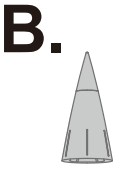

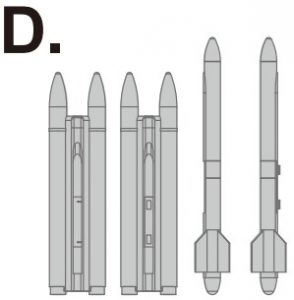

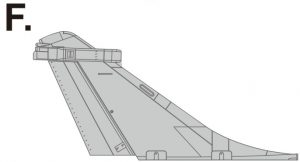


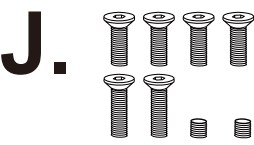
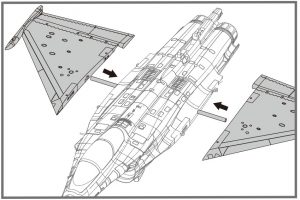
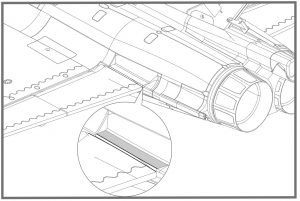


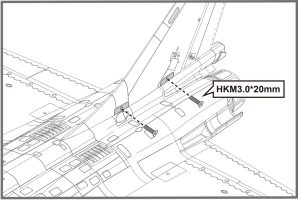
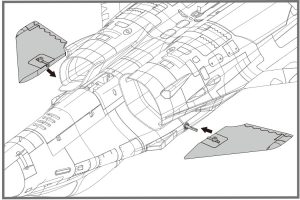
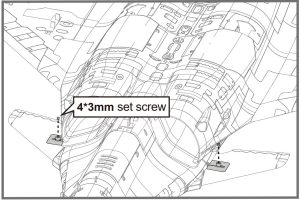
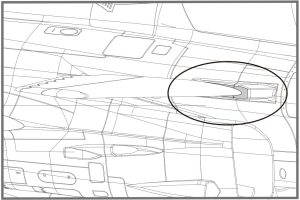
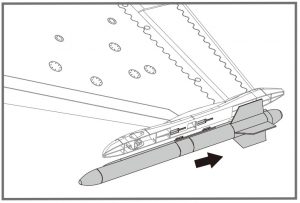
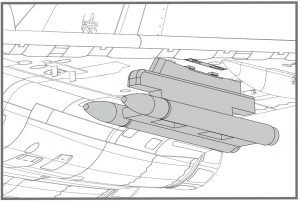
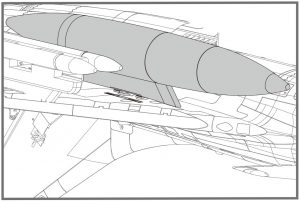 Note: the sticker side faces outboard.
Note: the sticker side faces outboard.
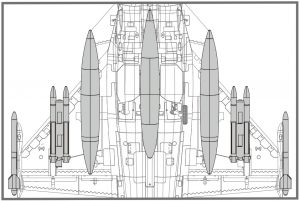
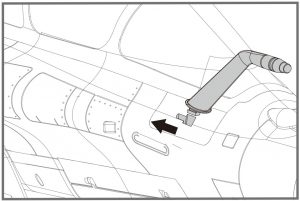
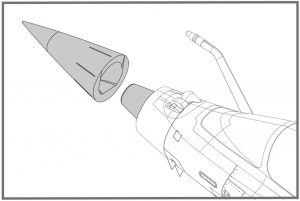
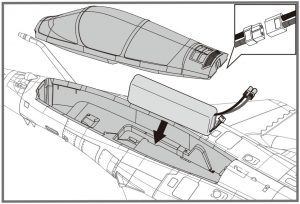
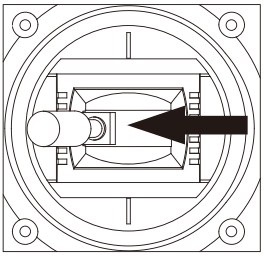 Aileron :
Aileron :
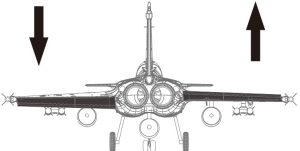
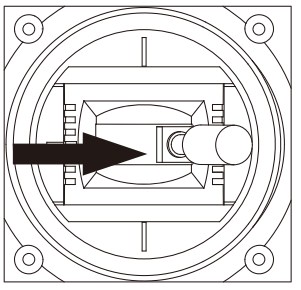
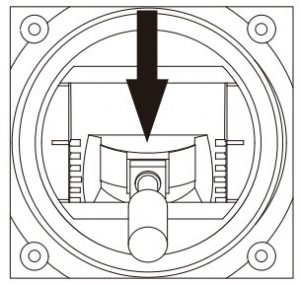
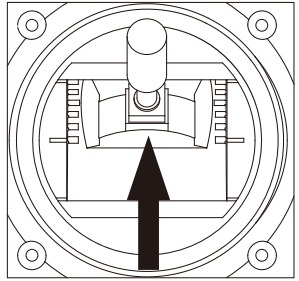
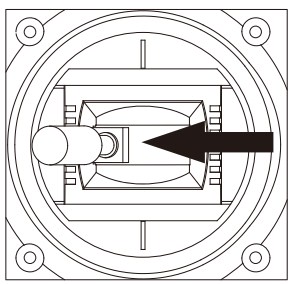 Elevator :
Elevator :
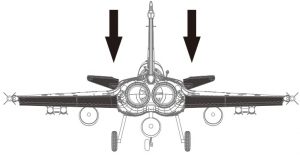
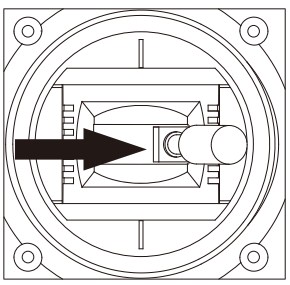 Steering Rudder :
Steering Rudder :